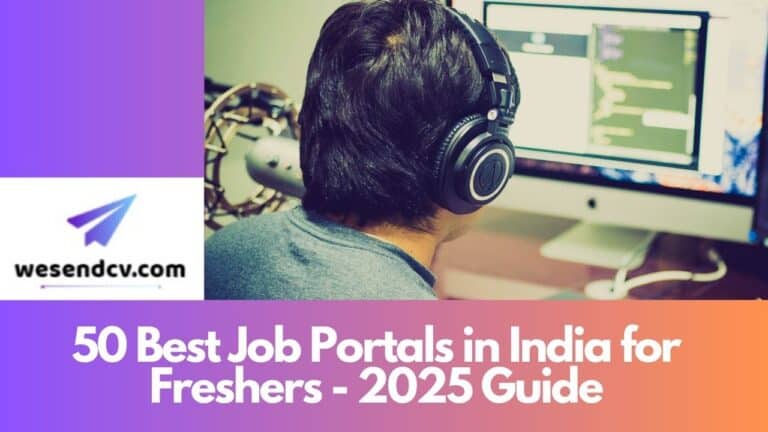The global job market has entered yet another volatile chapter in 2025. Despite hopes for stabilization following the disruptions of 2023 and 2024, this year is already showing signs of continued complexity. From massive layoffs in tech to an uptick in entrepreneurship and an evolving role for artificial intelligence, professionals are facing a landscape that demands resilience, adaptability, and proactive planning.
In this post, we’ll unpack key insights from experts observing hiring trends, economic forces, and organizational behavior. We’ll also explore actionable strategies to help job seekers, freelancers, and employers prepare for what lies ahead. Whether you’re actively looking for work or reevaluating your career strategy, this comprehensive guide aims to provide clarity in uncertain times.
Main Highlights of Content
ToggleThe State of the Market in 2025: Same Storm, Different Boat
When asked what 2025 might bring, many hiring experts and workplace strategists offered a unified sentiment: it looks a lot like 2024. While some sectors show signs of growth, the broader hiring climate remains sluggish and uncertain. A recurring theme is that market recovery isn’t linear—and predictions for a swift turnaround have largely missed the mark.
“2024 was supposed to be the year things picked up. But here we are, and many of those estimates were wrong. There’s still a lot of struggle, especially in the tech industry.”
Indeed, major tech firms have continued to announce layoffs in early 2025, cutting as much as 20% of their workforce in some cases. Even as job openings surface on platforms like LinkedIn, many candidates report frustrating and inconsistent hiring experiences—suggesting a mismatch between openings and actual hiring momentum.
Why Is the Market Still So Tough?
Several compounding factors help explain the ongoing challenges:
1. Post-Pandemic Correction in Tech
The technology sector is undergoing a significant correction. The boom during the pandemic led to over-hiring. Now, with cost pressures, slowing growth, and a new focus on profitability, companies are scaling back.
“We’re seeing an anti-tech shift. The post-pandemic bloat is being trimmed down, especially as firms adjust to a new AI-powered reality.”
This means fewer roles for knowledge workers in fields like software engineering, product management, and UX design—while demand grows in other industries.
2. AI Integration Is Changing Job Descriptions
AI is no longer just hype. Companies are now actively deploying AI tools to streamline operations—from automating repetitive tasks to reshaping customer service and marketing roles. This doesn’t always mean mass layoffs, but it does change the nature of jobs available.
“AI isn’t necessarily taking jobs away—it’s transforming them. Expect different roles to emerge, but fewer of the traditional ones.”
Candidates need to position themselves at the intersection of AI and human skills, blending technical literacy with creativity, emotional intelligence, and domain expertise.
3. A Conservative Q1 and Policy Uncertainty
With a new U.S. administration in place and global uncertainty surrounding tariffs, immigration, and international labor, businesses are taking a cautious approach.
“Companies are holding back in Q1. They’re playing it safe. That means less hiring, especially for mid-to-senior knowledge workers.”
This climate affects not just hiring volume, but also job mobility. People may stay longer in roles they’re unsatisfied with simply due to a lack of viable alternatives.
Still looking for job then check Entry-Level and Graduate, Junior level and Mid-level, Senior Roles, Expert & Leadership
Industry Bright Spots: Where Jobs Are Growing
Despite challenges in tech and professional services, several sectors are showing resilience and even growth:
- Healthcare and Elder Care: As populations age in many developed countries, these roles continue to be in high demand.
- Construction and Skilled Trades: Infrastructure investment and housing demand are fueling new opportunities.
- Manufacturing: Especially in regions promoting local production, this sector is seeing renewed interest.
- Logistics and Supply Chain: Post-pandemic recalibrations are driving hiring in warehousing, transportation, and supply management.
If you’re looking to pivot careers, targeting one of these sectors could increase your chances of finding stable employment in 2025.
The Return-to-Office (RTO) Push: Back to the Building?
The remote work experiment, once hailed as the future of employment, is undergoing a significant recalibration. Many companies—especially in tech and finance—are leveraging the tough job market to push return-to-office mandates more aggressively.
“Because the job market is so tight, companies have more leverage. We’re seeing a stronger push for RTO now.”
For some employees, this shift is a dealbreaker. Others are reevaluating the work-life tradeoffs of hybrid or in-office models. Regardless of your stance, being aware of this trend is crucial for making informed career decisions in 2025.
Rise of the Entrepreneur: Freelancing and Self-Employment Surge
Interestingly, one of the more promising developments is the surge in entrepreneurship and freelancing. Amid layoffs, unstable job boards, and restrictive RTO policies, many professionals are opting out of traditional employment altogether.
“Between broken application systems, AI bots, and ghost jobs, more people are jumping ship to freelance or launch businesses.”
However, structural challenges persist—particularly in the U.S., where healthcare remains tied to employment, making self-employment risky for many. Still, for those who can make the leap, this could be a time of bold innovation and independence. Still looking for jobs the use Job Search For 7 Days | 30 Days | 60 Days | 90 Days Remote Jobs, Onsite Jobs, Hybrid Jobs
The Network Effect: Who You Know > What You Apply For
Online job boards are facing credibility issues. Mass applications, ghost listings, and AI bots have diluted their effectiveness. The result? Networking is now more important than ever.
“Referral bonuses are going to come back in a big way. People who know people are going to win.”
Investing in professional relationships—whether through LinkedIn, industry meetups, or alumni groups—is no longer optional. It’s one of the few proven ways to bypass the broken application system.
What Job Seekers Should Do in 2025: A Tactical Playbook
Given this landscape, here’s a practical approach to staying competitive and resilient in your job search this year:
1. Upgrade Your Skills Strategically
Focus on skills that intersect with emerging needs: data literacy, prompt engineering, communication, and adaptability. Take online courses, get certifications, and document your learning on professional platforms.
2. Be Proactive and Consistent
Treat your job search like a job. Set goals for networking, outreach, and applications. Follow up regularly. Track what works and what doesn’t.
3. Leverage Your Network (The Right Way)
Don’t just ask for a job—ask for insights, advice, and introductions. Be specific, polite, and reciprocal. Offer to help others too.
4. Diversify Your Income Streams
Consider freelancing, part-time work, consulting, or side projects. Not only can they provide financial cushioning, but they can also build your portfolio and credibility.
5. Research Companies Deeply
Before applying, investigate the company’s financial health, layoff history, and leadership culture. Sites like Blind, Levels.fyi, and LinkedIn posts can offer valuable inside perspectives.
What Employers Should Do: Rebuilding Trust in 2025
If you’re a hiring manager or business leader, now is the time to lead with transparency and empathy. Here’s how to align with job seekers’ needs in 2025:
- Clearly Communicate Job Openings: Avoid ghost listings or vague roles.
- Invest in Humanized Recruitment: Use AI to streamline—not replace—human touchpoints.
- Support Career Growth: Offer learning stipends, mentorship, and pathways for advancement.
- Honor Workplace Flexibility: If requiring in-office presence, explain why and create meaningful on-site experiences.
- Prioritize DEI and Well-being: These aren’t just buzzwords—they’re key factors in candidate decisions.
Looking Ahead: Cautious Optimism and a Call to Action
The job market in 2025 may not be the bounce-back year many hoped for—but it’s not entirely bleak. While traditional job seeking feels broken in many ways, new paths are opening: entrepreneurship, AI-aligned roles, and the rediscovery of human networks.
Whether you’re navigating a layoff, planning a pivot, or building something of your own, the key is to stay informed, flexible, and connected. As we’ve seen, those who act with intention—rather than simply reacting to the headlines—stand the best chance of thriving in this complex economy.
Final Thought
Work has always evolved. From industrial revolutions to digital transformations, every generation faces a unique employment challenge. What sets successful professionals apart is not avoiding disruption—but adapting with courage, curiosity, and community.
If you’re feeling overwhelmed, remember: you are not alone. The market may be tough, but you are tougher. Stay sharp, stay connected, and keep moving forward. Readl also 2025 Job Market Predictions – What to Expect and How to Thrive






